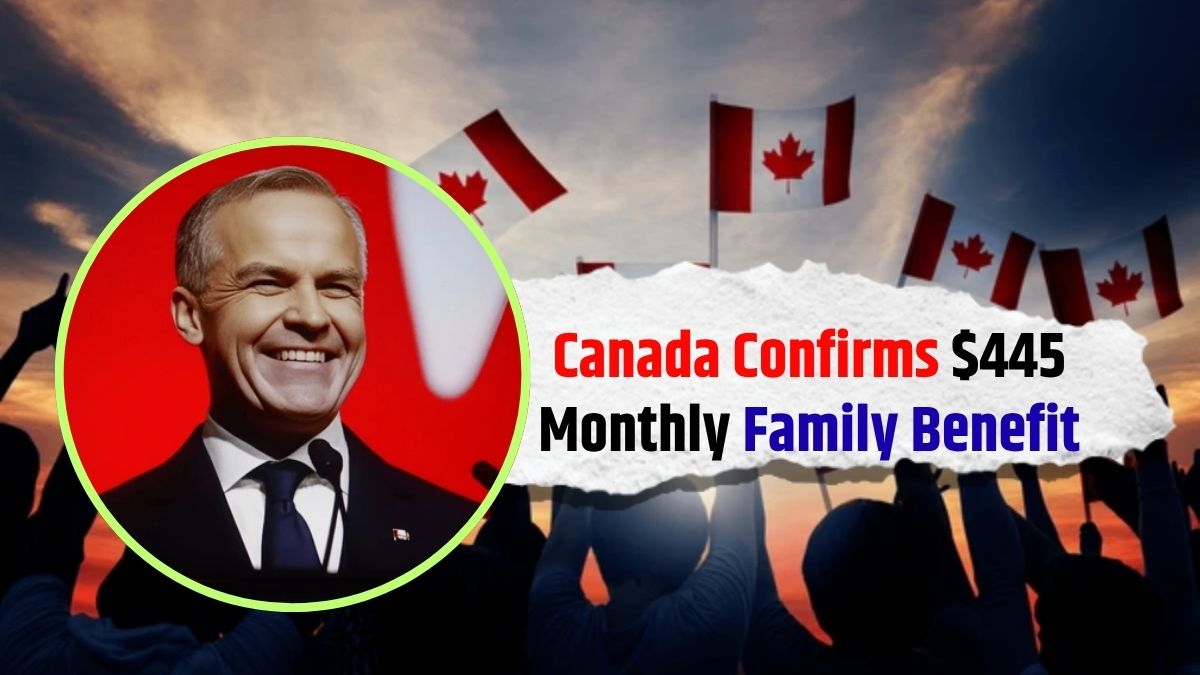Families across Canada can look forward to added financial support starting January 1, 2025, with the introduction of the \$445 monthly Canada Family Benefit. Designed to help low- and middle-income households manage the rising costs of raising children, this benefit is modeled on the current Canada Child Benefit (CCB) but enhances monthly support for families with children under 18 years old.
A New Chapter in Family Assistance
The Canada Family Benefit is a new federal support program managed by the Canada Revenue Agency (CRA). This initiative promises up to \$445 per child, per month, starting in January 2025, for eligible Canadian families.
The benefit is being launched in response to increasing living costs across Canada, especially in categories like childcare, food, clothing, school supplies, and housing. The government hopes this non-taxable monthly benefit will provide some relief to parents who are feeling the financial squeeze of inflation.
How the Benefit Works
This new family benefit aims to be accessible, automatic, and predictable, making it easier for families to plan and manage their budgets.
Here are the major highlights:
- Non-taxable monthly cash payments
- Up to \$445 per child based on family income
- Payments issued on the 20th of every month
- No additional application needed—CRA determines eligibility automatically
- Eligibility based on your most recent tax return
The benefit structure is income-tested, meaning that lower-income families will receive the maximum amount, while higher-income households may receive reduced amounts or none at all.
Who Qualifies?
To receive the Canada Family Benefit, families must meet a set of straightforward criteria:
- Must live with a child under 18 years of age
- Must be the primary caregiver of that child
- Must reside in Canada for tax purposes
- Both parents or guardians must file their annual income tax returns
- Must meet the CRA’s income thresholds, which prioritize assistance for lower-income households
If your household currently qualifies for the Canada Child Benefit, chances are high that you’ll also qualify for the new Canada Family Benefit starting in 2025.
When Will You Start Receiving Payments?
The first payments will begin January 1, 2025, and will be sent monthly thereafter. Here’s a breakdown of how the rollout will work:
- January 2025: Program officially launches
- Monthly Payments: Distributed on the 20th of each month
- By July 2025: All eligible families will receive the full \$445 per child
Families will get payments via direct deposit or mailed cheques, depending on how their CRA accounts are set up.
What Should Families Do to Prepare?
The good news is that you don’t need to apply separately for this benefit. However, to ensure that you receive it on time and in full, here are some essential steps you should take:
- File your income tax return on time for the most recent year
- Ensure all dependents and family members are correctly listed with the CRA
- Keep your CRA My Account up to date with current banking and mailing information
- Verify marital status and household income, as this affects eligibility and amounts
Missing tax filings or outdated information could delay your benefit—or disqualify you temporarily.
How Families Can Use the Benefit
The Canada Family Benefit is designed with flexibility in mind. Families can use the funds in ways that best suit their household needs, including:
- Childcare expenses
- Groceries and nutrition
- Back-to-school supplies and clothing
- Healthcare costs not covered by insurance
- Recreational and developmental activities
This benefit recognizes that no two families are the same, and gives parents the freedom to choose where the funds are most impactful.
Understanding the Benefit in Context
While the Canada Child Benefit (CCB) remains active, the Canada Family Benefit (CFB) builds on it by offering higher monthly support. Many of the eligibility rules are similar, but CFB focuses more on inflation-adjusted aid, especially for households feeling squeezed by rising costs in 2025.
The CRA will use the same data and infrastructure to administer both programs, allowing for a smooth transition and integration between CCB and CFB payments for qualifying families.
Additional Resources for Families
If you’re looking to get more out of your family benefits or simply want to stay informed:
- Log into your CRA My Account for personalized benefit info
- Review CRA updates regularly for new rules or changes
- Compare the Canada Family Benefit and Canada Child Benefit
- Speak to a tax advisor or financial planner for guidance on maximizing your entitlements
The federal government is also expected to launch informational campaigns ahead of the rollout to ensure families understand the new benefit and how to access it.
Why This Benefit Matters
The cost of living in Canada continues to rise, with many families struggling to keep up with essentials like housing, food, and transportation. The Canada Family Benefit is a direct response to this economic pressure.
By boosting monthly support for children, the government aims to reduce child poverty, support working families, and ensure that kids across the country have access to the basics they need to thrive.
FAQs
Q1: Is a separate application required to receive the Canada Family Benefit?
A: No. If you file your taxes and meet the eligibility criteria, the CRA will automatically assess and issue the benefit.
Q2: How is the \$445 amount calculated?
A: It depends on your family’s adjusted net income and the number of children. Lower-income families will receive the full \$445 per child, per month.
Q3: Will this benefit replace the Canada Child Benefit (CCB)?
A: No. The Canada Family Benefit is designed to enhance, not replace, existing child-focused benefits like the CCB.
Q4: What if my banking details are outdated?
A: You may receive a cheque by mail, which can cause delays. It’s best to update your CRA My Account with accurate banking info.
Q5: What happens if I forget to file my tax return?
A: You may miss out on receiving the benefit. Filing your return is mandatory for eligibility—even if you have little or no income.








